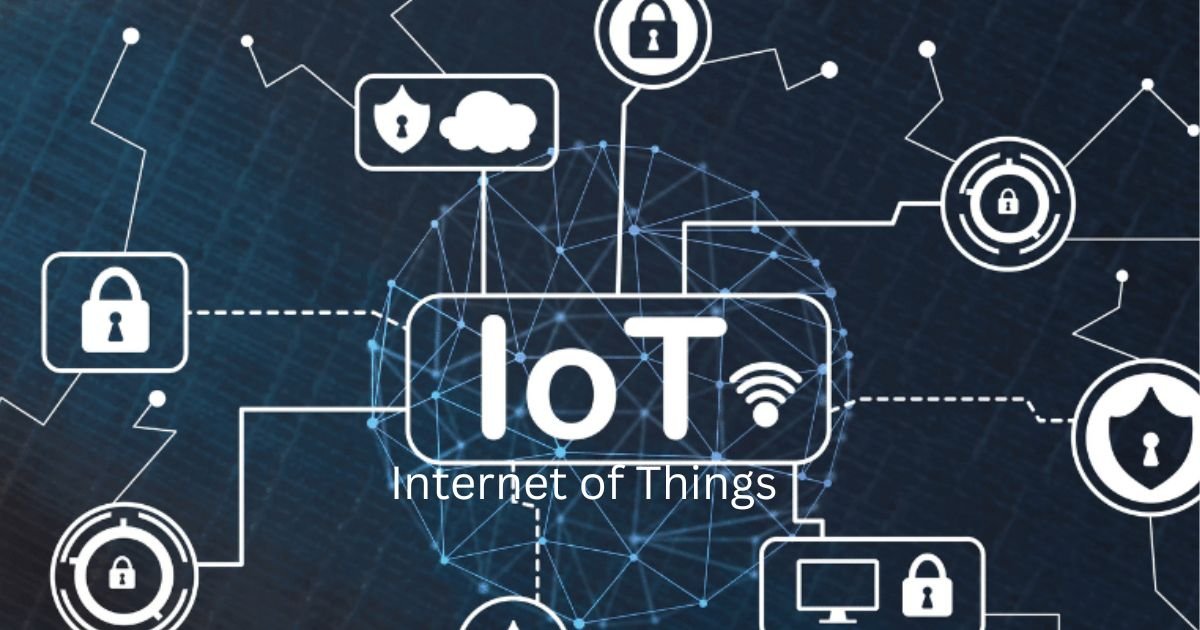The Internet of Things (IoT) is revolutionizing the way we live, work, and interact with the world around us. From smart homes and connected vehicles to healthcare and agriculture, the IoT is reshaping industries and transforming everyday life. In this article, we’ll explore the definition of IoT and provide a brief overview of its impact on our world.

Table of Contents
ToggleDefinition of IoT
At its core, IoT refers to the network of interconnected devices that collect and exchange data over the internet. These devices, equipped with sensors and software, can communicate with each other and with centralized systems, enabling them to gather and analyze data in real-time. This data can then be used to automate processes, improve efficiency, and enhance decision-making.
Brief Overview of IoT’s Impact
The IoT has already made significant strides in various aspects of our lives. In smart homes, IoT devices such as thermostats, lights, and security cameras can be controlled remotely through smartphones, offering convenience and energy savings. Wearable technology, another IoT application, has transformed healthcare by enabling continuous monitoring of vital signs and providing valuable insights into individual health and fitness levels.
In the automotive industry, IoT has given rise to connected vehicles that can communicate with each other and with roadside infrastructure, paving the way for safer and more efficient transportation systems. IoT is also revolutionizing industries through Industrial IoT (IIoT), which utilizes connected sensors and machines to optimize manufacturing processes, reduce downtime, and improve overall productivity.
In agriculture, IoT is being used for precision farming, allowing farmers to monitor and manage crops and livestock more effectively. Environmental monitoring is another area where IoT is making a significant impact, with sensors deployed to track air and water quality, detect pollution, and mitigate environmental hazards.
IoT in Everyday Life
Enhancing Convenience and Connectivity: In our increasingly interconnected world, the Internet of Things (IoT) has become a fundamental part of our daily lives, revolutionizing how we interact with our surroundings. From the comfort of our homes to our daily commutes, the IoT has seamlessly integrated technology into our everyday routines, offering unparalleled convenience and connectivity.
Smart Homes:
Smart home essentials can control your home’s temperature, lighting, and security system with just the touch of a button on your smartphone. This is made possible by IoT-enabled smart devices such as smart thermostats, smart light bulbs, and smart security cameras. These devices not only offer convenience but also help homeowners save energy and enhance the security of their homes.
Wearable Technology:
Health monitoring devices and fitness trackers are prime examples of IoT in wearable technology. These devices can track our heart rate, sleep patterns, and physical activity, providing valuable insights into our health and fitness levels. By empowering individuals to take control of their health, wearable technology is revolutionizing personal wellness.
Connected Vehicles:
Connected cars are transforming the way we commute, making our journeys safer, more efficient, and more enjoyable. Features such as real-time traffic updates, predictive maintenance alerts, and autonomous driving capabilities are just a few examples of how the IoT is enhancing the driving experience. Additionally, IoT-enabled vehicles can communicate with each other and with roadside infrastructure, paving the way for smarter transportation systems.
In conclusion, IoT in everyday life has brought about a new level of convenience and connectivity, seamlessly integrating technology into our daily routines. As IoT continues to evolve, it will undoubtedly play an even greater role in enhancing our lives and shaping the future of how we live, work, and interact with the world around us.
IoT in Healthcare: Revolutionizing Patient Care
The Internet of Things (IoT) has emerged as a game-changer in the field of healthcare, offering innovative solutions that are transforming patient care. From remote patient monitoring to personalized medicine, the IoT is paving the way for more efficient and effective healthcare practices, ultimately leading to improved healthcare outcomes.
Remote Patient Monitoring:
One of the key benefits of IoT in healthcare is remote patient monitoring, which allows healthcare providers to monitor patients’ vital signs and health data in real-time, outside of traditional clinical settings. This technology enables early detection of health issues, timely interventions, and personalized care plans, all of which contribute to better patient outcomes and reduced healthcare costs.
Personalized Medicine:
IoT is enabling a shift towards personalized medicine, where treatments are tailored to individual patients based on their genetic makeup, lifestyle, and environmental factors. By leveraging IoT devices and data analytics, healthcare providers can gain insights into patients’ unique health profiles, allowing for more targeted and effective treatments.
Smart Hospitals:
The IoT is also transforming traditional hospitals into smart hospitals, where interconnected devices and systems streamline operations and improve patient care. From smart beds that monitor patient movement and vital signs to connected medication dispensers that ensure patients receive the right medications at the right time, the IoT is enhancing the efficiency and quality of care in hospitals.
Improving Healthcare Outcomes:
Overall, IoT in healthcare is driving significant improvements in healthcare outcomes. By enabling early detection of health issues, facilitating personalized treatment plans, and enhancing the efficiency of healthcare delivery, IoT is helping to save lives and improve the quality of life for patients around the world.
Navigating the IoT Landscape: Addressing Challenges and Ethical Considerations
As the Internet of Things (IoT) continues to expand, it brings with it a host of challenges and ethical considerations that must be carefully navigated. From security and privacy issues to data management challenges, stakeholders must work together to ensure that the benefits of IoT are maximized while mitigating potential risks.
Security and Privacy Issues:
One of the most pressing challenges facing the IoT is the issue of security and privacy. With billions of interconnected devices collecting and exchanging data, the risk of cyberattacks and data breaches is heightened. Stakeholders must prioritize cybersecurity measures, such as encryption and authentication, to protect sensitive data and ensure the integrity of IoT systems.
Data Management Challenges:
The sheer volume of data generated by IoT devices poses significant data management challenges. Stakeholders must develop robust data management strategies to collect, store, and analyze data effectively. This includes ensuring data quality, interoperability, and scalability to support the diverse needs of IoT applications.
Ethical Considerations:
IoT raises important ethical considerations related to data privacy, consent, and transparency. As IoT devices collect and analyze vast amounts of personal data, stakeholders must prioritize ethical practices, such as obtaining informed consent and implementing data anonymization techniques, to protect individuals’ privacy rights.
By working together to prioritize cybersecurity, implement robust data management practices, and adhere to ethical standards, stakeholders can ensure that IoT fulfills its promise as a force for good in the digital age.
IoT in Agriculture:
Cultivating Innovation for a Sustainable Future- In recent years, the agricultural industry has witnessed a profound transformation with the adoption of Internet of Things (IoT) technologies. These advancements, including precision farming, livestock monitoring, and crop management, are revolutionizing the way farmers cultivate crops and raise livestock, leading to increased productivity, sustainability, and profitability.
Precision Farming:
Precision farming, also known as precision agriculture, involves the use of IoT devices such as drones, sensors, and GPS technology to optimize farming practices. These technologies enable farmers to monitor soil conditions, crop health, and weather patterns in real time, allowing for more precise application of water, fertilizers, and pesticides. By minimizing waste and maximizing yield, precision farming is helping farmers improve crop quality and reduce environmental impact.
Livestock Monitoring:
IoT devices are also being used to monitor the health and well-being of livestock. Sensors attached to animals can track vital signs, behavior patterns, and feed intake, providing valuable insights into their health and performance. This data allows farmers to detect health issues early, improve breeding practices, and optimize feeding schedules, ultimately leading to healthier animals and higher yields.
Crop Management:
IoT is revolutionizing crop management practices by providing farmers with real-time data on crop growth, soil moisture levels, and pest infestations. This information enables farmers to make informed decisions about irrigation, fertilization, and pest control, leading to higher crop yields and reduced environmental impact. Additionally, IoT-enabled crop monitoring systems can help farmers identify and respond to crop diseases and nutrient deficiencies early, minimizing crop loss and improving overall crop quality.
Looking Ahead:
The Future of IoT in an AI-driven World- As the Internet of Things (IoT) continues to evolve, several key trends are shaping its future direction. From integration with artificial intelligence (AI) and machine learning to the expansion of the IoT ecosystem and the establishment of standards and interoperability, these trends are poised to drive innovation and transform industries in the years to come.
Integration with AI and Machine Learning:
One of the most significant trends in IoT is the integration of AI and machine learning technologies. By leveraging AI algorithms, IoT devices can analyze vast amounts of data in real time, enabling them to make intelligent decisions and adapt to changing environments. This integration is expected to lead to more autonomous and responsive IoT systems, unlocking new possibilities for automation and efficiency across industries.
Expansion of the IoT Ecosystem:
Another key trend is the expansion of the IoT ecosystem to include a wider range of devices and applications. As IoT technologies become more affordable and accessible, we can expect to see a proliferation of connected devices in homes, businesses, and public spaces. This expansion will create new opportunities for innovation and collaboration, driving the growth of the IoT market.
Standards and Interoperability:
Ensuring standards and interoperability will be crucial for the continued growth and adoption of IoT. As the number of connected devices grows, it will become increasingly important for devices from different manufacturers to communicate and work together seamlessly. Establishing common standards and protocols will be essential for achieving this interoperability and ensuring the security and reliability of IoT systems.
Conclusion: The Impact and Future of IoT
As IoT continues to evolve and expand, its impact on our world will only grow stronger. By connecting devices, collecting data, and enabling smarter decision-making, IoT is driving innovation across industries and transforming the way we live and work. As we embrace the possibilities of a more connected future, it’s clear that the IoT will play a central role in shaping the world of tomorrow.
How does 5g technology enhance the Internet of Things (IoT)?
Unlocking the Potential: How 5G Enhances IoT
5G technology is poised to revolutionize the Internet of Things (IoT) by offering faster speeds, lower latency, and increased capacity. These improvements will enable a wide range of IoT applications that were previously not feasible with existing cellular technologies.
Faster Speeds:
5G technology offers significantly faster data speeds compared to previous generations of cellular networks. This means that IoT devices can transmit and receive data more quickly, enabling real-time communication and faster response times for applications such as autonomous vehicles, remote surgery, and smart grids.
Lower Latency:
5G networks have lower latency, or delay, which is crucial for applications that require near-instantaneous communication, such as industrial automation and augmented reality. With 5G, IoT devices can communicate more efficiently, leading to improved performance and reliability.
Increased Capacity:
5G networks can support a larger number of devices simultaneously, thanks to their increased capacity. This means that IoT deployments can scale more easily, supporting more devices and applications without compromising performance.
Improved Energy Efficiency:
5G technology is more energy-efficient than previous cellular technologies, making it ideal for IoT devices that are often battery-powered or located in remote areas. This improved energy efficiency extends the battery life of IoT devices, reducing maintenance costs and improving overall reliability.
In conclusion, 5G technology is set to enhance the Internet of Things (IoT) by offering faster speeds, lower latency, increased capacity, and improved energy efficiency. These advancements will unlock new possibilities for IoT applications, drive innovation, and transform industries.









